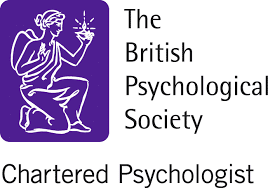
Understanding EMDR Therapy and Its Benefits
EMDR (Eye Movement Desensitization and Reprocessing) is a therapy primarily used to help individuals cope with and process traumatic experiences. People might choose EMDR for various reasons:
- Trauma Resolution: It’s effective for processing traumatic memories, especially those causing distress like PTSD, anxiety, phobias, or disturbing life experiences.
- Reducing Emotional Distress: People seek EMDR to alleviate emotional distress linked to specific memories or events.
- Enhancing Coping Mechanisms: It helps in developing healthier coping mechanisms when dealing with triggers or distressing memories.
- Addressing Negative Beliefs: EMDR assists in challenging and reprocessing negative beliefs linked to the trauma.
As for effectiveness, research shows promising results. Many individuals report significant improvements in their symptoms after EMDR treatment. However, its effectiveness can vary from person to person. Some might experience rapid improvement, while others may need more sessions or a combination of therapies for comprehensive healing.
It's important to undergo EMDR under the guidance of a trained therapist experienced in trauma treatment for optimal results. Overall, while it's considered effective for many, individual experiences and responses to therapy can differ.
Why Choose Psychological Therapeutic Solutions Ltd for EMDR Therapy
Psychological Therapeutic Solutions Ltd having clinical psychologists are trained in EMDR which can influence your decision-making process for whether to engage with therapy in a few ways:
- Specialised Expertise: Clinical psychologists trained in EMDR offer specialised expertise in treating trauma and related conditions. This can be reassuring for those with trauma or PTSD symptoms.
- Tailored Treatment: These clinical psychologists can tailor the therapy to your specific needs, ensuring it is personalised to address your unique experiences and challenges.
- Evidence-Based Practice: EMDR is an evidence-based therapy for trauma-related issues. Having access to professionals trained in this technique provides assurance of receiving a treatment backed by research and best practices.
- Comprehensive Care: Clinical psychologists are trained to assess and treat various mental health conditions, allowing for a comprehensive evaluation and recommendation of the most suitable therapy or combination of therapies.
- Trust and Comfort: Knowing that the therapists at Psychological Therapeutic Solutions Ltd have expertise in EMDR might increase your trust and comfort in starting therapy.
In essence, having access to clinical psychologists trained in EMDR at Psychological Therapeutic Solutions Ltd expands your options for therapy and ensures that you can explore an evidence-based, specialised approach for trauma or related concerns if it aligns with your needs.






